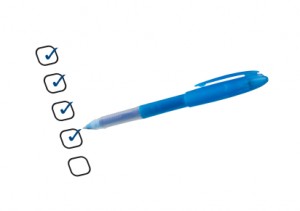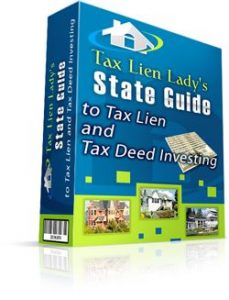 Once you have purchased your first tax lien or liens, you need to take some steps to protect your investment and, eventually you collect your profit. But before you protect your investment and profit from it, you first need to prepare to be a successful tax lien investor by taking the steps necessary to buy profitable liens. Here’s my 5 STEPS to buying profitable tax liens.
Once you have purchased your first tax lien or liens, you need to take some steps to protect your investment and, eventually you collect your profit. But before you protect your investment and profit from it, you first need to prepare to be a successful tax lien investor by taking the steps necessary to buy profitable liens. Here’s my 5 STEPS to buying profitable tax liens.
Step #1: Select the Right Place To Invest
Here are a couple of questions that I get asked all of the time: “Where is the best place to invest in tax liens” and, “What are the best states to invest in.” But the truth is that the best place for me might to invest might not be the best place for you to invest. The best state for you to invest in depends on your answers to these questions:
- Are you looking for a high return on your investment or do you want to own property?
- What state do you live in?
- Where do you like to vacation?
- How much money do you have to invest?
- Are you investing with money from your retirement account or after tax money?
- Are you looking for a short term or long term investment?
If you don’t have much money to invest than you really need to be looking at investing in tax liens and not tax deeds or redeemable deeds. If you would like to get the property and not just high interest on your money than you are better off investing in tax deeds or redeemable tax deeds – not tax liens. I don’t think it’s very wise to invest in a state just because they are one of the most profitable places to invest, especially if you live a few thousand miles away and that state does not have online tax sales. The first thing that you need to do is to find the closest state to you where it would make sense for you to invest, based on your answers to the questions above.
Step #2: Track Down the Tax Sale Information
Next you need to get the tax sale information; the bidding procedures for the tax sale, the location and time of the tax sale, the terms of the sale, and the tax sale list. There are resources and tools available to help you with this, but you can usually get the information that you need by calling the party responsible for the tax sale. Usually it’s the county treasurer or county tax collector. If you can’t get the information that way, then there are tax sale list providers that will provide links to the county web sites and enhanced tax sale lists for a fee. These lists have a lot more information than the lists that you typically get from the county and will cut down the time it takes for you to evaluate the properties in the tax sale (step #3).
Step # 3: Evaluate the Tax Sale Properties
This is probably the most important step in the process and involves you doing your due diligence on the properties in the tax sale to see which ones are worth bidding on. When evaluating the properties you need to have a way to track the information for each property. You’ll need to know more about the properties in a tax deed sale than you will for properties that are in a tax lien sale. Even for tax lien properties you’ll want to know that the property is valuable before you purchase a lien on it. At the very minimum you’ll want to know the tax assessed value of the property and see what the property looks like from the street. It’s also nice to know when the property was last sold last, what price it sold for, and whether or not there is a mortgage on it. For tax deed properties you’ll also want to know if there are any liens, judgments, or encumbrances on the properties. And for both tax lien and tax deed properties, you’ll want to make sure that there are no environmental problems. This information can be found online for most states, but sometimes you will have to go to the county assessment office or county hall of records to get the information that you need.
Step #4: Prepare to Bid at the Tax Sale
Now that you’ve got the tax sale information and you’ve done your due diligence and determined which properties you will bid on, it’s time to get ready to go to the tax sale. You’ll have to register to bid and make sure that you have the proper form of payment for any successful bids that you might have. Make sure that you understand the terms of the sale and bidding procedures and that you complete any necessary paperwork. You’ll need a tax ID in order to bid at a tax lien sale and you’ll need to supply a w-9 form. (Foreigners will need to have a w-8BEN form).
Step#5: Show Up And Bid At The Tax Sale!
Once you’ve done all of your homework, it’s time to show up and bid. If the sale is live make sure that you arrive early, in plenty of time to get any updates of liens or deeds that have been removed from the list, and a good seat. Make sure that you don’t have any distractions, it is an auction and things happen very fast. It helps to have a bid sheet with all of the properties that are on the sale list, with the ones that you want to bid on marked with the amount that you’re prepared to bid. Do not get carried away and bid more than your pre-determined amount for a property, and don’t bid on any properties that you did not investigate first! Pay for any successful bids on time or they may be re-bid and you may be barred from future tax sales.
I share this 5 STEP process with you so that you’ll learn from my mistakes and frustrations – and you won’t make the same mistakes I made when I set out to build my tax lien portfolio. If you’ve experienced frustrations in trying to get started with investing in tax liens or tax deeds, and want to avoid costly mistakes, join me for this free training, The Build Your Profitable Tax Lien Portfolio Preview.




By Henry February 14, 2012 - 6:56 pm
I’ve been looking at Nassau County tax liens and have gathered a great deal of information including reading all of the NY State and Nassau County laws pertaining to property taxes. In Nassau County they have everything working against you. They want $100 per day registration fee just to be in the bidding room. They use the bid down method and I’ve read that most liens get sold for 2-3% (per 6 months) but that some get bid all the way down to 0%. If you do win one, you only get your bid rate on future taxes paid. So why on earth would someone bid it down to 0% if they can’t even make money in the future? Am I missing something here or are there a large number of people out there bidding without a clue as to what they are doing? Sure 2-3% is a decent return (4-6% per year) but it seems to me to be a whole lot of work for such a low return.
By Joanne February 17, 2012 - 12:09 pm
Hi Henry,
The $100 per day registration wouldn’t be bad if you can actually purchase a few liens for each day you attended the auction. Also they do post a schedule so you know what townships or villages are going to be sold each day, so you can only register for the days which the properties that you are interested in will be sold. I can understand why investors would bid down to 2%, since that’s actually 4% per annum and you can’t do that in a CD or in a money market these days. But I can’t understand why people bid down to 0%, since as you said you don’t make anything on the certificate amount or sub tax payments. I don’t think you would even pay any subsequent taxes since you wouldn’t make any interest on them. I don’t know if there is a penalty applied like there is in NJ. It will be interesting to see what happens at the tax sale this year.
By Lawrence Leone February 1, 2012 - 11:20 am
I attended the Platte County Mo tax lien sale last August.
I had done my due dilligence and a list of liens to bid on with the maximum I would bid over the lien amount to receive a return of at least 7%. (Mo pays 10%, but 0 on the overbid amount.
One bidder outbid everyone on most every lien.
He seemed to be a knowledgeable investor/bidder
I can’t understand the rationale of someone bidding so much over the tax lien amount when no interest is earned on the overbid amount, it would reduce the return on investment to almost nothing…?
By Joanne February 1, 2012 - 11:51 am
Hi Lawrence,
I know that in NJ investors do the same thing, they bid high premiums to where it seems like they are making nothing at all on their money. But the fact is that they do that because they know that once they own the lien, they have ability to pay the subsequent taxes and get the maximum interest rate on the subsequent taxes. So they are bidding a premium amount assuming that they will be able to pay the subsequent taxes for at least one year.
In MO, investors are getting 10% on the certificate amount and 10% on any subsequent taxes paid. I think that the investor you mentioned has that all figured into his bids. If you wrote down just how much he paid for each property, then you can figure out what his return would be based on him being able to pay the subsequent tax payments for the next year. It would also be helpful to know how long most liens are held before they redeem, so that you can figure out how many sub tax payments his is likely to pay before the lien redeems. Once you do that, you’ll know his bottom line – what the lowest interest rate he will accept is on a tax lien.